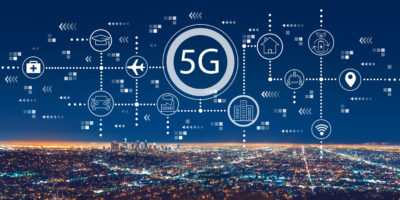Don’t count 4G out just yet. Mobile users in Germany, Italy and the U.K. saw significantly faster 5G average download speeds when they were also connected to additional amounts of 4G spectrum, according to Opensignal.
“In the U.K., when we compared the same-sized continuous spectrum blocks of 40 megahertz in the 3.5 and 3.7 GHz bands used for 5G supported by different bandwidths of 4G spectrum, we saw that U..K operators managed to significantly boost average 5G download speeds using additional 4G spectrum capacity,” wrote Robert Wyrzykowski, Opensignal Senior Industry Analyst.
With 25 megahertz to 40 megahertz of supporting 4G spectrum, U.K. operators achieved average 5G download speeds of 74.4 Mbps. When an additional 20 megahertz were added, average 5G download speeds grew by 46.5 percent, to 109 Mbps. When another 20 megahertz were added, the speed went up another 50.1 percent to 163.6 Mbps.
“Also, we saw a significant boost in speed from using extra 4G spectrum in instances when operators used a larger continuous block of 100 megahertz of 5G spectrum — higher by 54.2 percent, rising from 103.3 Mbps to 159.3 Mbps,” Wyrzykowski wrote.
Opensignal found similar increases in Germany when it tested users’ average 5G download speeds when various 4G bandwidths were added to same-sized continuous blocks of 15 megahertz in the 5G band. Adding 20 megahertz of 4G spectrum resulted in a 66.6 percent increase from 118.3 Mbps to 197.1 Mbps.
“When we examined a much larger 5G spectrum block, we observed an even greater increase with additional 4G spectrum used,” he wrote. “At 90 megahertz of 5G spectrum, adding at least 40 megahertz of 4G spectrum bandwidth — which means at least two additional carriers — brought the speed users experienced up from 192.6 Mbps to 411.2 Mbps, an increase of 113.5 percent.
In Italy, average 5G download speeds increased when more 4G bandwidth was used but not as much, according to Opensignal’s tests. 5G speeds clocked in at 46.5 Mps and 97.1 Mps, with the addition of 20 megahertz and 40 megahertz of 4G spectrum, respectively.
“Our analysis shows that with carrier aggregation technology smartphones’ use of 4G bands helps to improve average 5G download speeds, especially in Germany and the UK, and to a lesser extent in Italy,” Wyrzykowski wrote. “Operators that wish to offer a high-quality 5G mobile experience must also ensure that their 4G network foundation is strong. Carrier aggregation will only grow in importance with upcoming 5G deployments, facilitating the extension of 5G coverage and the increase of network capacity.”
By J. Sharpe Smith, Inside Towers Technology Editor





Reader Interactions